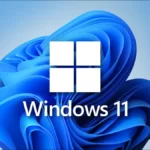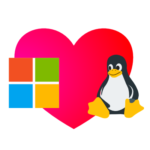
Launching “.au Direct”
Posted 24th March 2022
No comments
Australia’s domain name manager auDA (.au Domain Administration) today launched the direct registration of .au domain names.

Connect an RStudio project to Github
Posted 23rd March 2022
No comments
Use GitHub to back-up your R projects within RStudio and ensure you maintain version control.

Windows Package Manager (Winget) Cheat Sheet
Posted 9th March 2022
No comments
Windows Package Manager is a command-line application for Windows 11 that simplifies the installation and updating of software. It’s easy to use and reasonably reliable.

Blob analysis with OpenCV in Python
Posted 10th December 2021
No comments
Here’s my methodology for performing a blob analysis from binary images in OpenCV using Python code.

Fit an inscribing circle to a shape in OpenCV
Posted 30th October 2021
No comments
The largest possible circle that can be drawn interior to a plane figure is called an inscribing circle. This can easily be fitted to a binary shape in OpenCV.

Run Linux GUI apps in Windows 11
Posted 27th October 2021
No comments
Use Windows Subsystem for Linux (WSL) to run Linux graphical user interface (GUI) programmes in Windows.

Install apps on Windows without Microsoft Store
Posted 19th October 2021
2 comments
How can you install Microsoft Store apps on your Windows 10 or Windows 11 machine if your administrator has blocked Windows Store?

Install Windows Subsystem for Linux in Windows 11
Posted 14th October 2021
No comments
With the release of Windows 11 comes a vastly easier method for installing the Windows Subsystem for Linux (WSL) on your PC.

MyGov versus the Service Victoria app
Posted 12th October 2021
1 comment
My experience adding my COVID-19 vaccination digital certificate to the Service Victoria app on an Android phone. It took a few goes.
Skip cells when running Jupyter Notebook scripts
Posted 27th September 2021
1 comment
There is a surprisingly simple way to turn off specific cells in Jupyter Notebook without having to manually comment-out chunks of code.